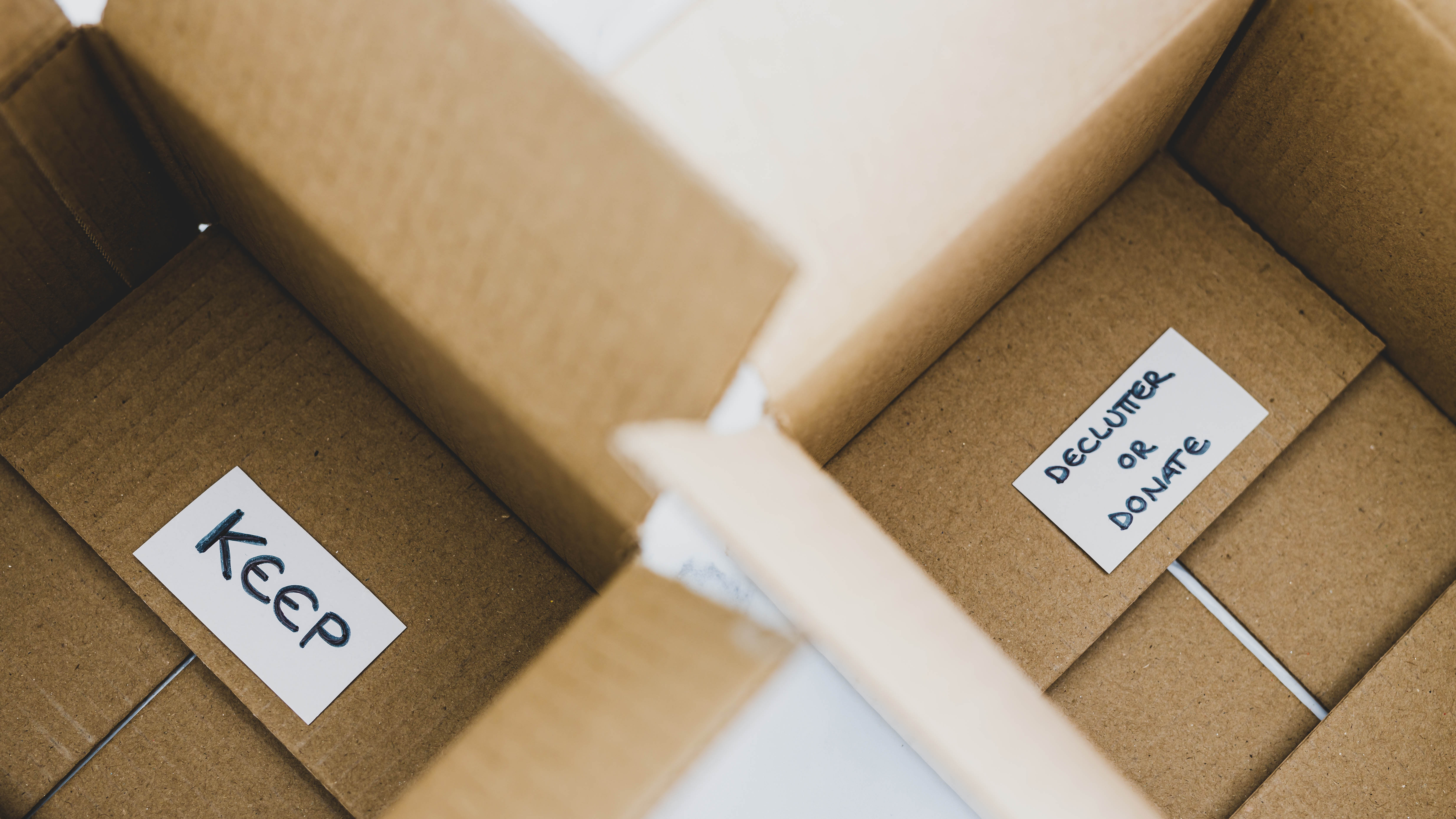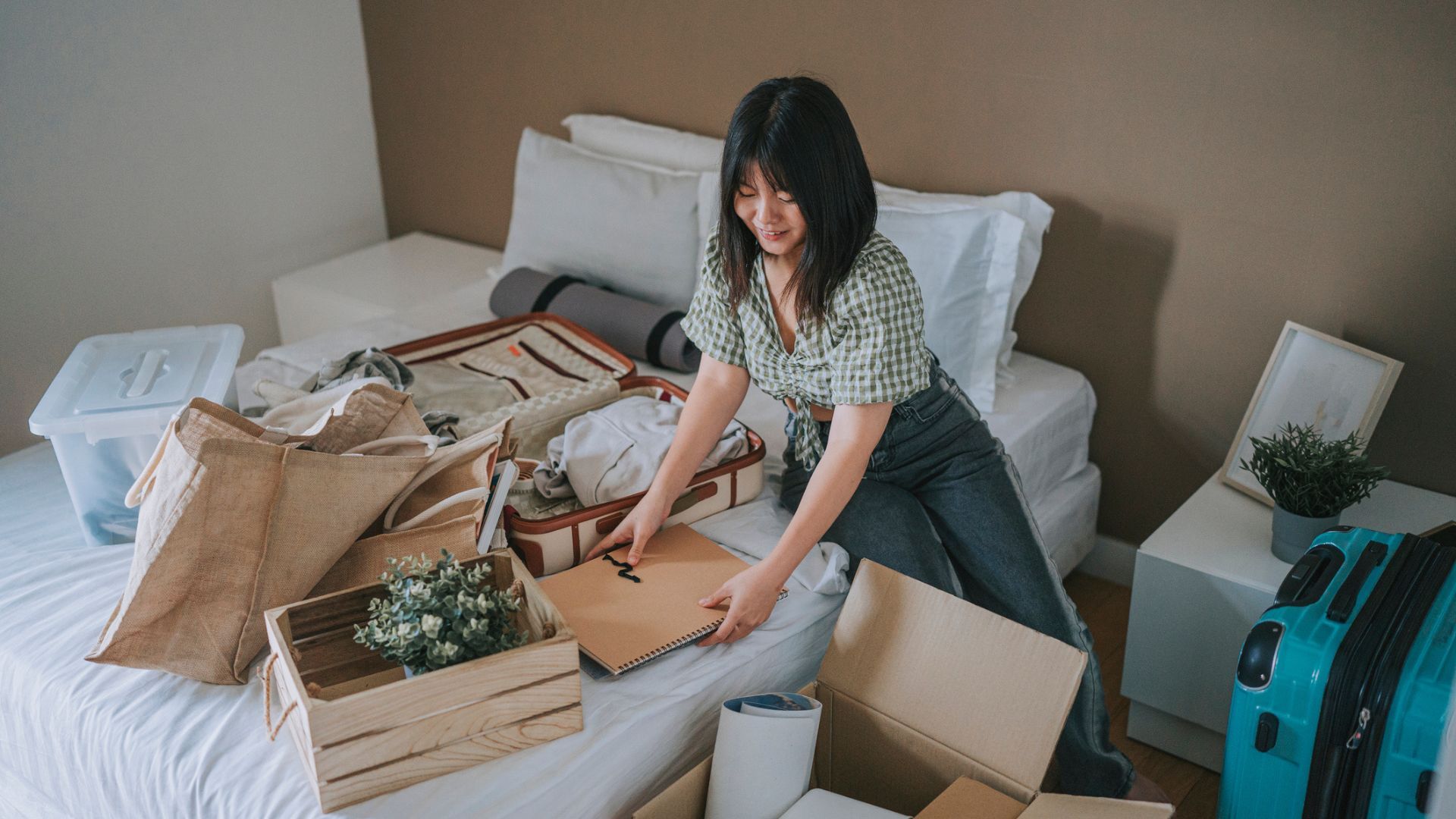I’ve spent a lot of time looking into decluttering trends and trying them out from the ‘poop rule’ to the 5S cleaning method, but one thing I’ve always struggled with which I think will resonate with a lot of people is finding the time to actually do it.
When you try to ignore the clutter, it follows you around. And when you try to tackle it, it feels like there’s never going to be enough time in the day to actually get it done – perpetuating a vicious circle. Then, I heard about a decluttering method that asks you to take it easy and I was all ears.
Instead of trying to tackle all your clutter in one go or assigning a specific time period to get it all finished, slow decluttering asks you to give yourself as much time as you need while contemplating mindfulness and thinking about sustainability.
What is slow decluttering?
While I don’t think fast decluttering is a thing, there’s always the unspoken pressure you put on yourself to get your house tidy as quickly as possible. It’s as if we have some internal timeline that’s telling us now that we’re tackling the clutter, we’ve got to do all of it speedily before we lose momentum.
With slow decluttering though, it’s about taking as much time as you need to do the task properly. Instead of rushing to throw things away, quickly reorganize your spaces or fill up the donate bin, you should consider each room in sections and take it slow.
It’s a bit like the ‘1% rule’ cleaning method that asks you to just improve a room by 1% instead of trying to tackle it all at once. Instead of trying to declutter your whole home in a weekend or over a certain period of time, just do a little at a time and be as mindful as possible.
Then, instead of stressing yourself out over decluttering or feeling bad when you don’t meet a deadline that you’ve set, you can know that over time, your slow decluttering will make all the difference with much less stress.
Trying out slow decluttering

Whenever I try out a decluttering method, I always set myself a time period for which to complete it before noting down my thoughts. For slow decluttering though, it really goes against the whole trend to rush it, so as the peaceful method asked me to do, I took my time.
To get started, I found it best to tell myself that I’d just do a little everyday – and by a little, I mean I picked a small section of my home to address. From a busy drawer to a box underneath my bed that’s been gathering dust for a while, once I completed the little task, I was done for the day or even a few days if I didn’t find out I had time to declutter again.
I also grabbed a couple of boxes and named them as designated places to put either items I’m planning to donate or items I’m not sure where to put. As I waited to find homes for miscellaneous items, they could live in the box until I was ready and that made reorganizing a space where those items didn’t belong a lot easier.
The donate box could also accumulate over time, rather than multiple visits to donation points. Instead, I could make a box that I’d enjoy filling up rather than rushing it.
It also helped to have one more box for a ‘I’m not sure’ pile of items. I often find when decluttering I make rash decisions because I’m keen to move onto the next thing and get my decluttering done as quickly and efficiently as possible. And then the next day, I feel a bit bad that I threw something out that I actually wanted.
Having the ‘I’m not sure’ box meant I could harness my mindfulness and revisit items without making impulsive choices to clear out my home. I actually really loved trying out the slow decluttering method and it’s one I’ve found a lot more easy to implement into my life on a long-term basis. Not only because it asks you to consider long-term rather than short-term quick results.
Sometimes, clutter can get a little overwhelming and there’s plenty of methods for tackling those messy moments fast. But, when it comes to taking time, using this alongside the ‘wind-down’ rule could be a lovely way to enjoy the decluttering process.











